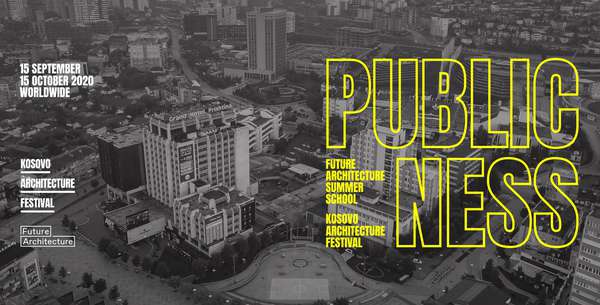Idea by
Armina Pilav, Damir Ugljen, Jonas Langbein
Un-war space lab
http://unwarspace.bk.tudelft.nl/
Call for ideas 2020
Drowned in Neretva River
Drowned in Neretva River
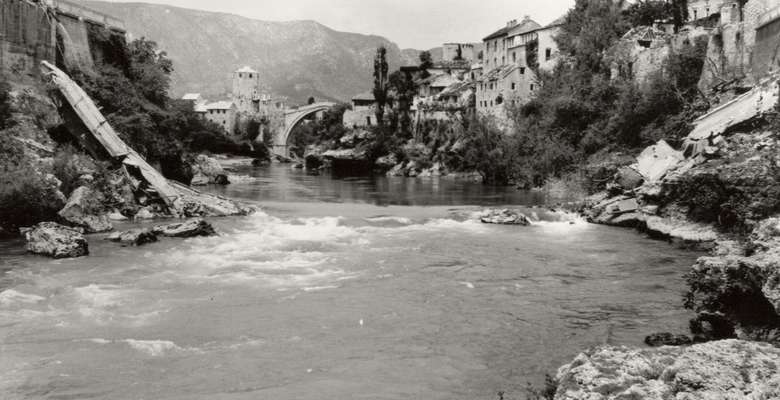
- Site-specific cases
Violent transformation of Mostar and Neretva started during the war in Bosnia (1992-1996). Historically, the city has been developed along the river, connected with nine bridges (Image 1) that with river banks before the war where important spaces of sociality. As the consequence of the war bridges destruction, construction of temporary war bridges that embodied traumas from inhabitants’ survival strategies (Image 2), Neretva and her organic system changed in environmental terms but also in its spatial and social role. In the wartime, the river ecosystem started to deposit anorganic materials, pieces of exploded bombs, remnants of temporary bridges and other debris. Since then, the river natural ecosystem is in constant becoming introducing hybrid spaces and species that today are underrepresented. Our idea is to “think with” Neretva and through narratives on architecture, nature, mapping, underwater archeology, represent her hybrid condition in Bosnia and internationally.

This image shows the landscape system between the city and the river depending on nine bridges over the river that were destroyed at the beginig of the war in 1992. They were physically reconstructed after the war, but city remains socially divided due to the war trauma and mainstream conflictual politics.
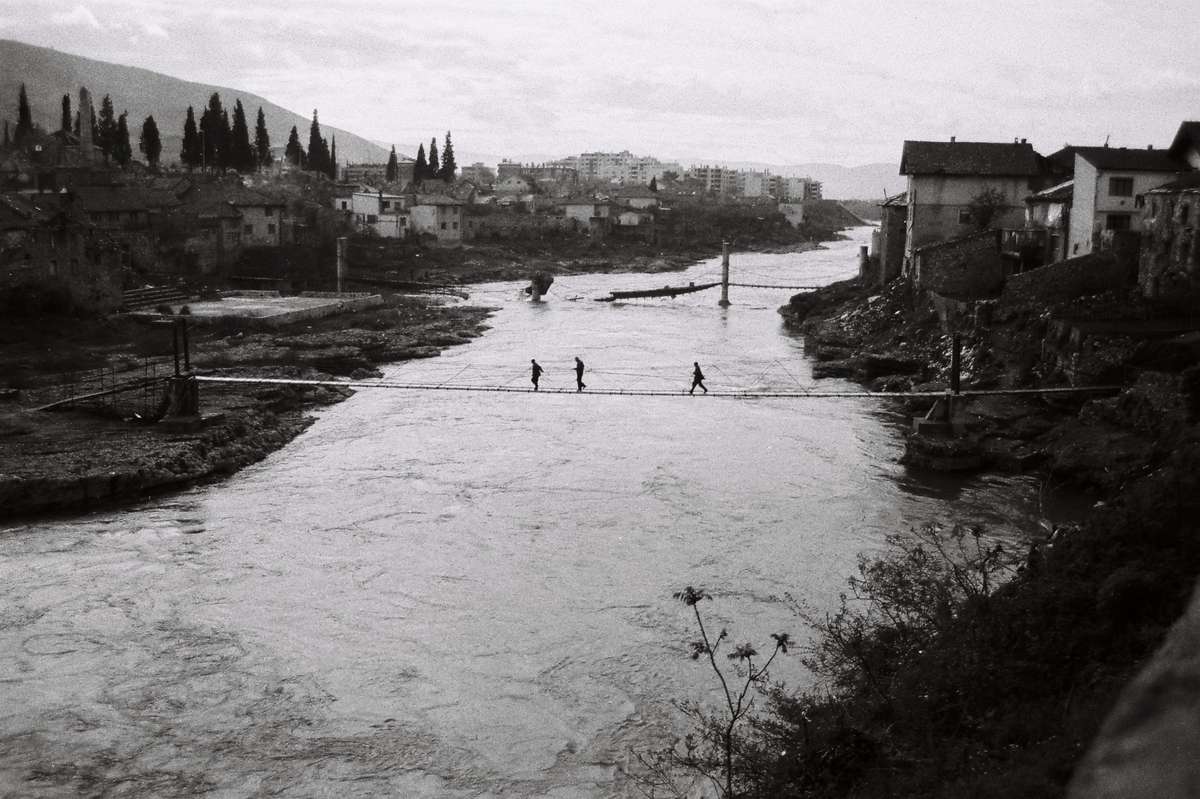
Following the war destruction of the main bridges, the inhabitants of Mostar together with the army constructed temporary bridges from all available materials in the city, including debris to connect two sides of the city.
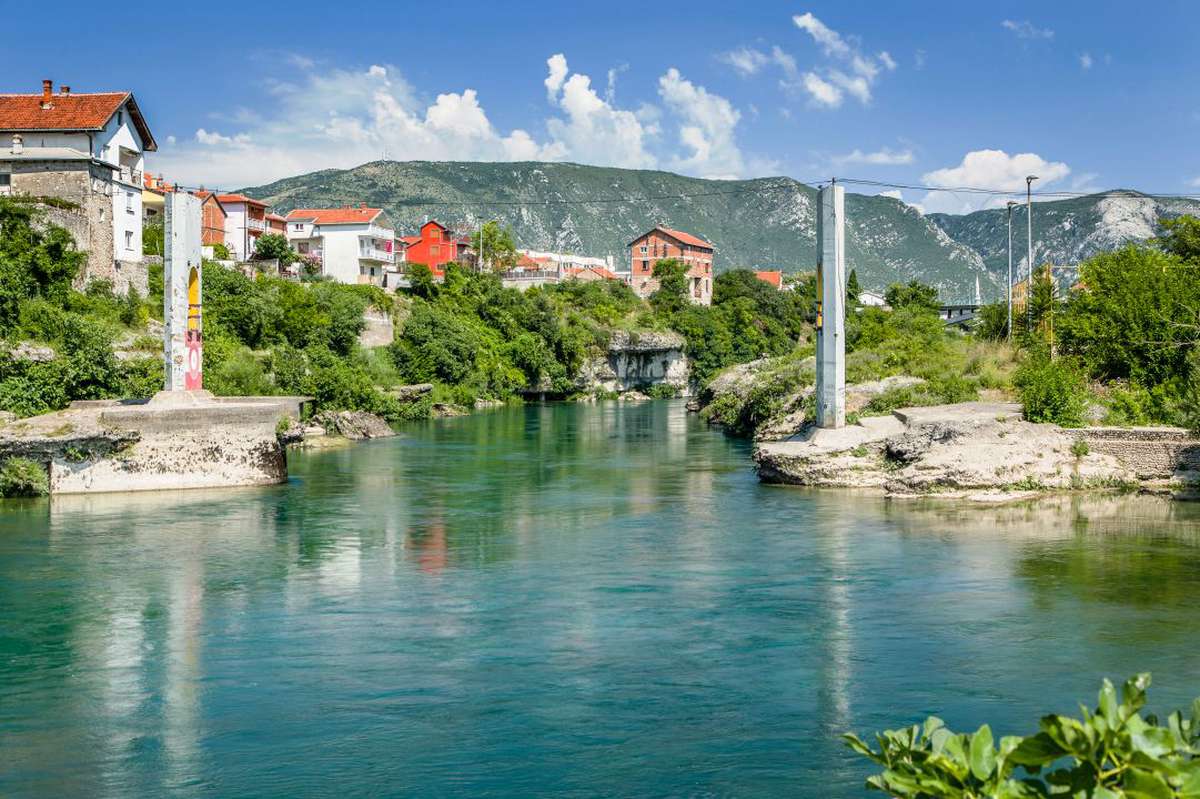
This image shows the residuals of the Kamenica temporary bridge that in citizens’ memory represent an important remnants of the landscape of survival.
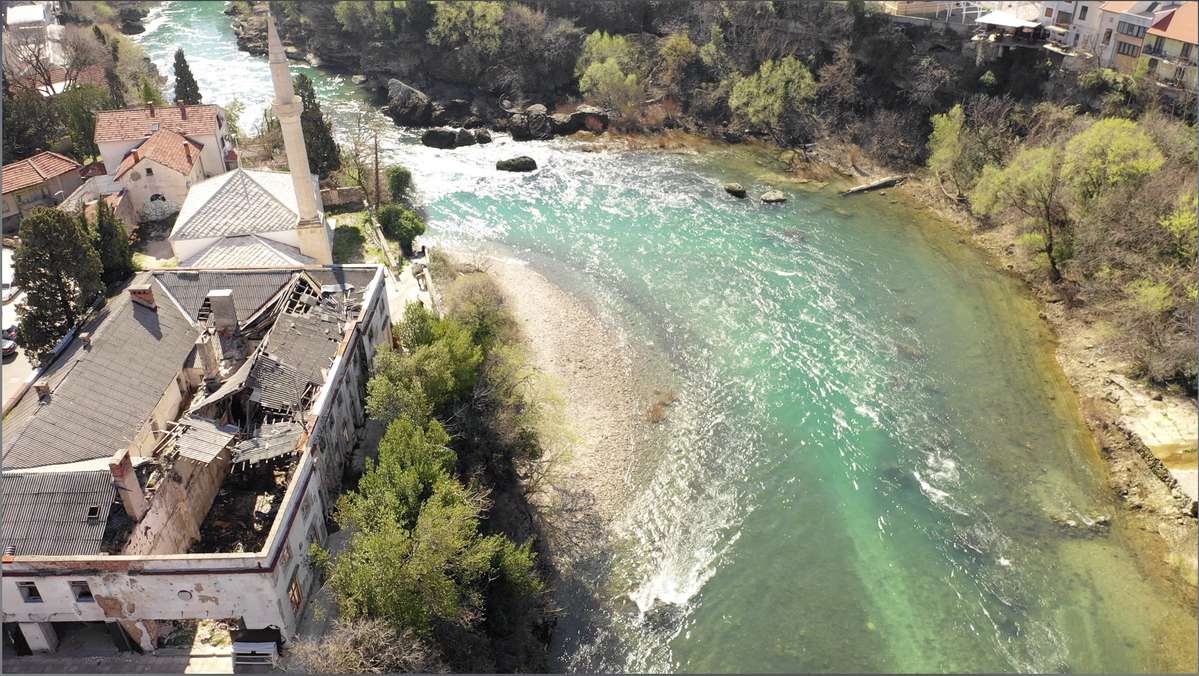
Along the river banks there are numerous public buildings and venues that were never reconstructed by the city or the state and this actually contributed to the higher river pollution and continued the war destruction of it.
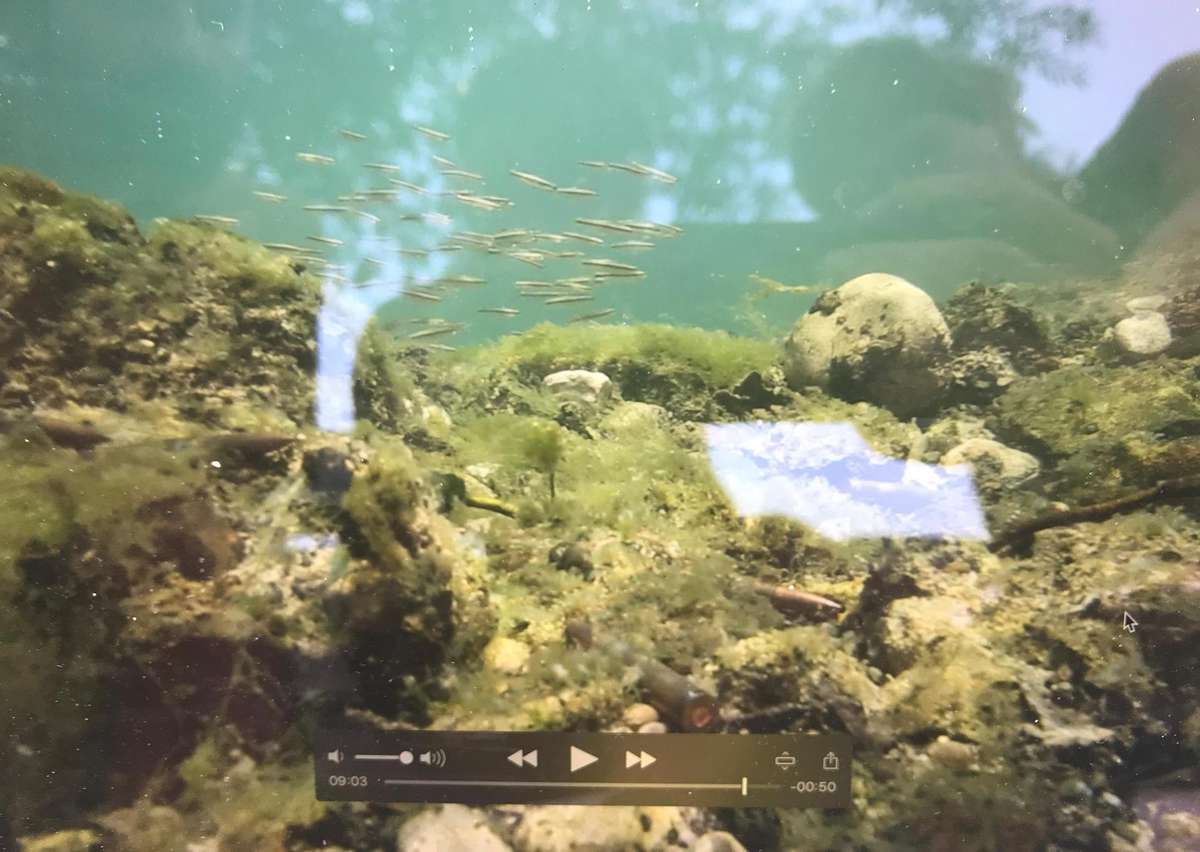
Caption from our underwater research from May 2018 where new living environments are created and forced co-existing of the fishes and bullets on the river bed rocks.
Drowned in Neretva River
Drowned in Neretva River

- Site-specific cases
Violent transformation of Mostar and Neretva started during the war in Bosnia (1992-1996). Historically, the city has been developed along the river, connected with nine bridges (Image 1) that with river banks before the war where important spaces of sociality. As the consequence of the war bridges destruction, construction of temporary war bridges that embodied traumas from inhabitants’ survival strategies (Image 2), Neretva and her organic system changed in environmental terms but also in its spatial and social role. In the wartime, the river ecosystem started to deposit anorganic materials, pieces of exploded bombs, remnants of temporary bridges and other debris. Since then, the river natural ecosystem is in constant becoming introducing hybrid spaces and species that today are underrepresented. Our idea is to “think with” Neretva and through narratives on architecture, nature, mapping, underwater archeology, represent her hybrid condition in Bosnia and internationally.
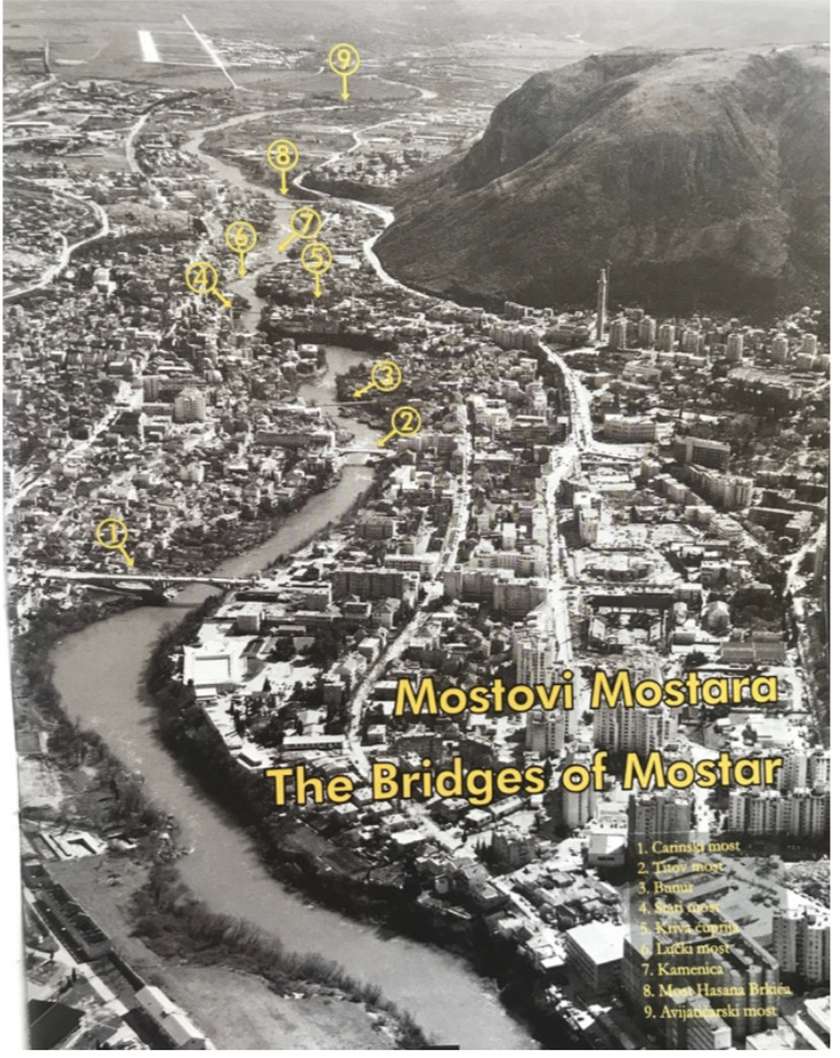
This image shows the landscape system between the city and the river depending on nine bridges over the river that were destroyed at the beginig of the war in 1992. They were physically reconstructed after the war, but city remains socially divided due to the war trauma and mainstream conflictual politics.
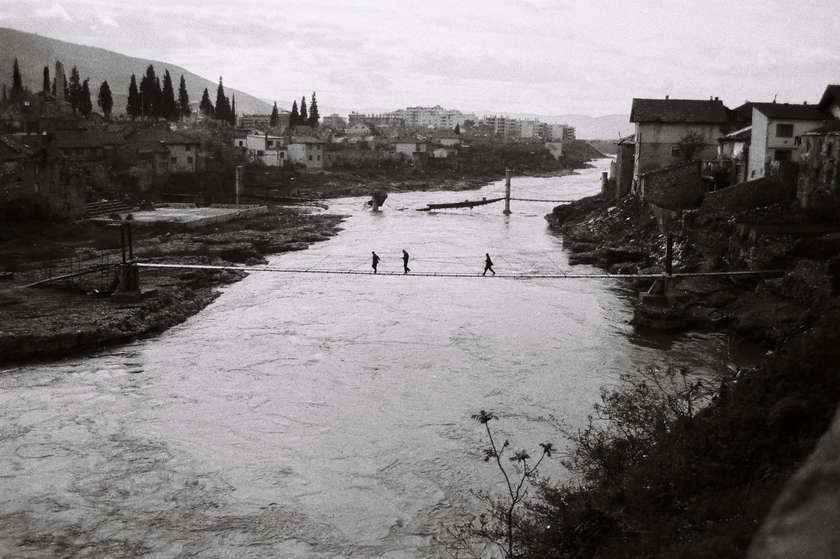
Following the war destruction of the main bridges, the inhabitants of Mostar together with the army constructed temporary bridges from all available materials in the city, including debris to connect two sides of the city.
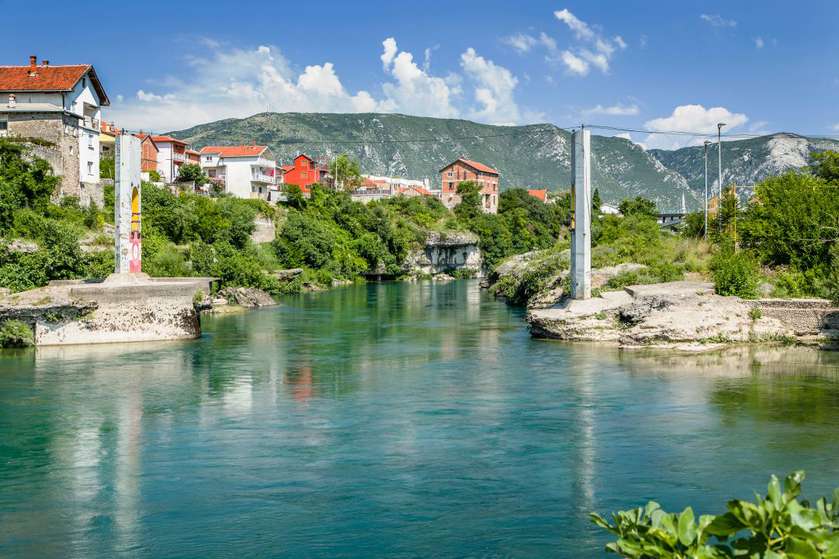
This image shows the residuals of the Kamenica temporary bridge that in citizens’ memory represent an important remnants of the landscape of survival.
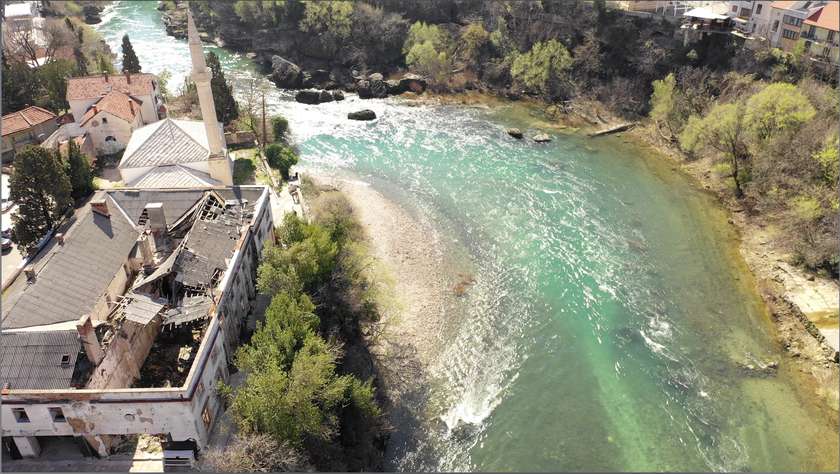
Along the river banks there are numerous public buildings and venues that were never reconstructed by the city or the state and this actually contributed to the higher river pollution and continued the war destruction of it.
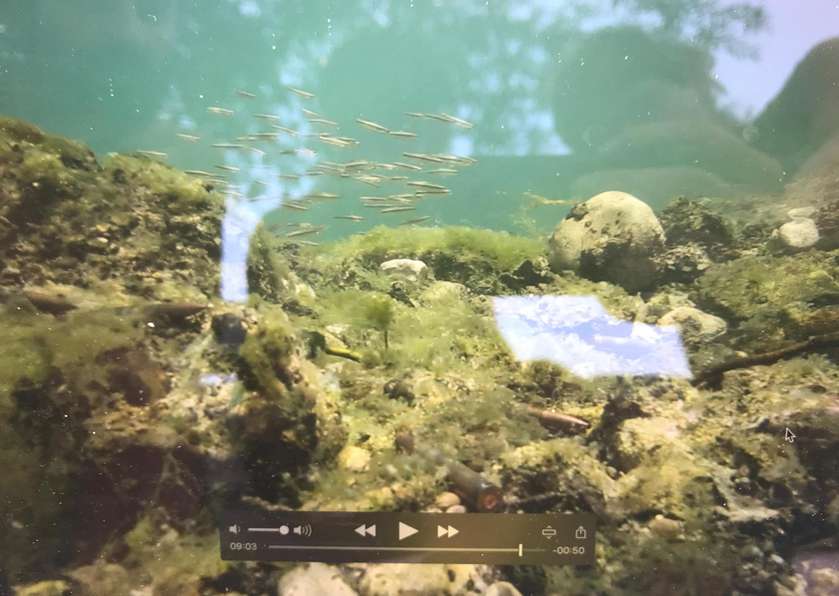
Caption from our underwater research from May 2018 where new living environments are created and forced co-existing of the fishes and bullets on the river bed rocks.
Idea by
Related

Building Narratives
